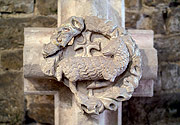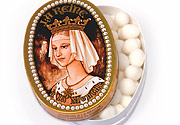
Flavinius the Roman...
Around 52 BC, Caesar, the future Roman emperor, gave some of his veteran soldiers land after his victory over the Gauls. Flavinius received a hill that bore his name, Flaviniacum, now called Flavigny. Caesar took aniseeds with him to care for his troops. It was probably at this point that the story of our candies began.Widerard the Burgundian...
Later on, the Burgundians, a Germanic-Scandinavian tribe, invaded the region. Rome officially authorized them to set up camp in this region to which they would leave their name: Burgundy. Corbon, a Burgundian lord, then had a castellum built in Flavigny, a stronghold in charge of the safety and surveillance of communication roads linking the villae of Flavinius.Flavigny’s first abbey was founded under the reign of Clovis (465-511). Burgundy was then annexed in 534 to the Frankish kingdom. Quickly destroyed, the abbey was rebuilt in 719 by Widerard, the son of Corbon and who was a Christian. It was Widerard who brought a monastic community to Flavigny. He became its second abbot. The monks of Flavigny obeyed the rule of Saint Benedict, who aimed to balance the monks’ time between prayer, manual labor and studies in a community living environment and a spirit of moderation.
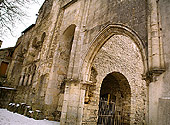
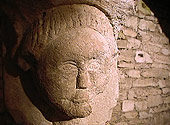

Charlemagne and the abbey
The reign of Charlemagne (747-814) brought with it a genuine cultural renaissance, and the abbey rapidly flourished. “In 733, Lyon and Burgundy were under the yoke of Charles Martel. He delegated a part of his authority to his son Pepin the Short, earldoms were given to relatives or loyal followers… and abbeys like Flavigny became the most effective relays of power” (Stéphane Lebecq “Les Origines Franques,” Le Seuil, 1990). Flavigny found itself involved in liturgical reforms initiated by those in power, and several manuscripts have been attributed to its scriptorium.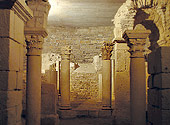
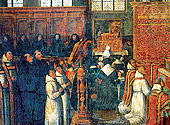

Monks who sculpted and built
As from 776, the Laus Perennis, a prayer that was sung day and night by the monks without interruption for over 200 years, testified to the greatness of the abbey. The medieval cult of relics greatly contributed to its prosperity, attracting pilgrims from the springs, the pilgrims of Saint James, and pilgrims from Sainte-Reine. They soon represented a crowd that needed to be fed, housed and cared for. There were up to three hospitals in the area around Flavigny.The church of Saint-Pierre de Flavigny Abbey was solemnly consecrated by Pope John VIII on October 28, 878. Every year, Saint-Simon’s Fair has been held in the village on this date.
Between 1230 and 1250, the Abbey was home to a considerable sculpture workshop that was able to simultaneously work on several other sites, such as Saint-Père-sous-Vézelay (1235-1245), Saint-Thibault (1240-1250), Notre Dame de Cluny (after 1233), the parish church of Saint-Genest in Flavigny, Rougemont, Molesme, Mitot and Aignay-le-Duc. Some sculptures that have been found, such as the keystone representing a lamb, are exhibited at the lapidary museum at the Flavigny abbey.
After his marriage with Marguerite de Provence, Saint Louis welcomed a whole series of poets, apothecaries and candy-makers to his Palace. They were severely governed by Blanche de Castille, the mother of the king. New recipes used aniseed, to the great pleasure of the Anysetiers from Rue Vieille du Temple. The small sugar candy encasing an aniseed was highly appreciated by the ladies of the court and was renamed “the queen’s candy” to avoid any jealousy.
In 1359, the English besieged Flavigny for six weeks. The abbey was pillaged. The troubles of the period that followed up to the wars of religion made it necessary to build a vast fortified wall surrounding the abbey and its outbuildings.
1789: the end of the monastic community
By the time of the French Revolution, only five monks remained at the abbey, while there had been sixty of them during the two centuries when the Laus Perennis was sung. The church was destroyed for the most part and the entire estate was divided up into private properties, with part of the monastic buildings being used by the Anis factory.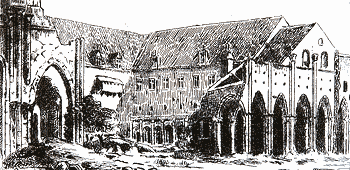
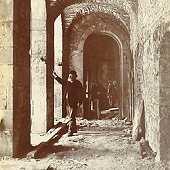

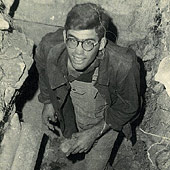
In 1814, there were eight manufacturers of Anis who had taken over from the monks in the production of the candy in the village and in the abbey. In 1846, the candy turbine replaced the antique “shaker”.
Gradually, a single manufacturer, Mr Jacques Edmond Galimard, bought out the village’s other Anis factories to form a single one within the former abbey.
In 1870, 20 tons of Anis de l’Abbaye de Flavigny ® were manufactured; in 1900, 30 tons;
in 1910, 50 tons, distributed all over France and already available for export.
And today like yesterday, thanks to the know-how inherited from the Abbey’s monks, the factory’s entire team is driven by the same desire to make Anis de Flavigny ®.
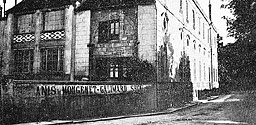
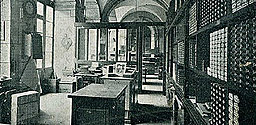
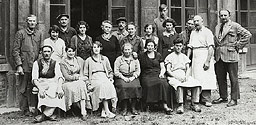
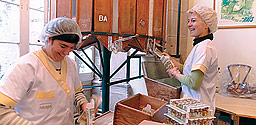
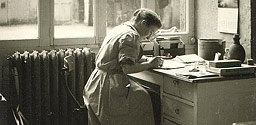
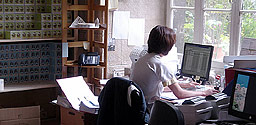
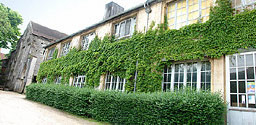
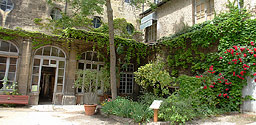
To find out more...
You can download the signs from the visit of the Abbey crypt in Flavigny:
Flavigny: 2000 years of history
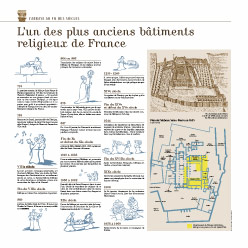
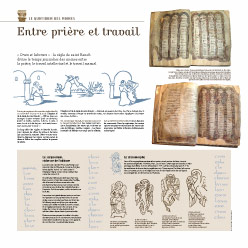
The abbey over the centuries

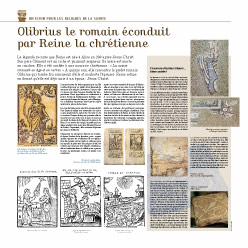
A pre-Roman sculpture school



At the heart of the crypt / Memoires of F. Guggenheim / Restoration of the Carolingian pillar




